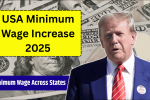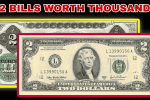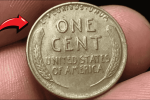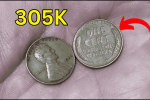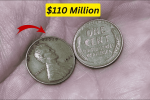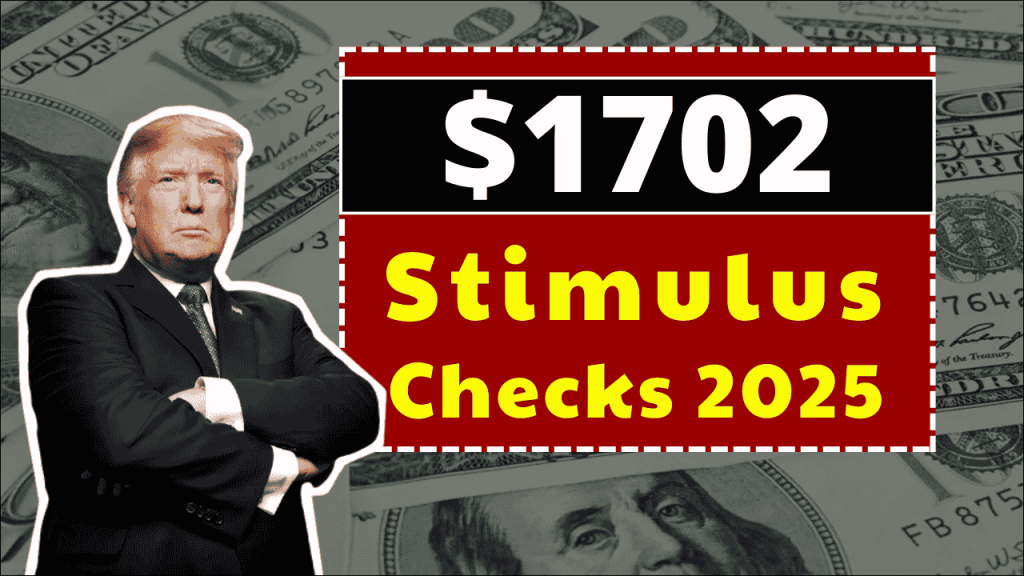
The U.S. government has approved a one-time economic stimulus payment of $1,702 for eligible Americans in 2025. This targeted financial relief initiative comes in response to persistent economic challenges, including inflation and cost-of-living increases that continue to strain household budgets across the nation. Unlike the series of payments issued during the COVID-19 pandemic, this represents a single disbursement designed to provide immediate assistance to those most affected by current economic conditions.
This comprehensive guide explains who qualifies for the payment, how to ensure you receive it, when payments will be distributed, and the most effective ways to utilize this financial boost.
Understanding the 2025 Stimulus Initiative
The $1,702 payment was authorized as part of broader economic relief measures aimed at supporting Americans still recovering from economic disruptions. While not as extensive as pandemic-era stimulus programs, this targeted payment focuses on providing meaningful assistance to lower and middle-income households, retirees, and vulnerable populations who continue to face financial challenges.
Key Objectives of the 2025 Stimulus Payment
- Provide immediate financial relief to households struggling with inflation
- Support consumer spending to stimulate economic activity
- Assist vulnerable populations including seniors and disabled Americans
- Offer targeted help to those most affected by rising costs of essentials
- Provide a financial bridge during ongoing economic recovery
The Internal Revenue Service (IRS) serves as the primary administrator of this program, working in coordination with the Social Security Administration (SSA) and Department of Veterans Affairs (VA) to ensure comprehensive distribution to all eligible recipients.
Detailed Eligibility Requirements
Qualifying for the $1,702 stimulus payment depends on several key factors. The table below outlines the core eligibility criteria:
| Eligibility Category | Requirements | Additional Notes |
|---|---|---|
| Income Thresholds | Single: Up to $75,000<br>Married Filing Jointly: Up to $150,000<br>Head of Household: Up to $112,500 | Based on Adjusted Gross Income (AGI) from 2024 tax returns |
| Citizenship/Residency | U.S. Citizen, Permanent Resident, or Qualifying Resident Alien | Must have valid SSN or ITIN |
| Tax Filing Status | Must have filed 2024 tax return (if required) | Non-filers who receive certain benefits may qualify automatically |
| Dependent Status | Cannot be claimed as a dependent on another tax return | College students often excluded if parents claim them |
| Special Categories | Social Security recipients<br>SSDI recipients<br>SSI recipients<br>Railroad Retirement recipients<br>VA beneficiaries | May receive payment automatically based on benefit status |
Phase-Out Ranges
The payment gradually decreases for incomes above the thresholds, with complete phase-out at:
- $99,000 for single filers
- $198,000 for married couples filing jointly
- $149,500 for heads of household
Individuals with incomes in the phase-out range will receive a reduced payment calculated at a rate of $5 less for every $100 of income above the threshold.
Official Government Resources
For authoritative information and assistance with your stimulus payment, consult these official government resources:
| Agency | Resource | Purpose | Official Link |
|---|---|---|---|
| Internal Revenue Service | Stimulus Payment Information Center | Official details on eligibility, amounts, and distribution | IRS Economic Impact Payments |
| IRS | Get My Payment Tool | Track status of your payment (when activated) | Get My Payment |
| Social Security Administration | SSA Economic Impact Payment Information | Guidance for Social Security recipients | SSA EIP Information |
| Department of Veterans Affairs | VA Benefits and Stimulus Information | Resources for veterans regarding payments | VA Economic Impact Payments |
| Treasury Department | Direct Express Information | For recipients who use Direct Express cards | Direct Express |
| USA.gov | Government Benefits Portal | Comprehensive benefits information | USA.gov Benefits |
These resources will be updated as the 2025 payment program is fully implemented. The IRS will likely activate dedicated tools closer to the distribution date.
Payment Distribution Timeline
The $1,702 stimulus checks will be distributed in phases throughout 2025. While exact dates have not been announced, the expected timeline follows this structure:
| Distribution Phase | Expected Timeframe | Payment Method | Recipient Group |
|---|---|---|---|
| Phase 1 | January-February 2025 | Direct Deposit | Recipients with bank information on file with IRS |
| Phase 2 | March-April 2025 | Direct Deposit | Social Security, SSDI, SSI, and VA benefit recipients |
| Phase 3 | April-May 2025 | Paper Checks | Recipients without direct deposit (lowest income first) |
| Phase 4 | June-July 2025 | EIP Cards | Remaining eligible recipients |
| Final Cleanup | Throughout 2025 | Various | Individuals requiring special processing |
The IRS typically prioritizes payments based on income level, with lower-income households receiving payments first within each phase.
Potential Delays
Several factors may delay your payment:
- Recent changes to banking information
- Filing 2024 taxes late
- Address changes not reported to IRS
- Issues requiring manual review of your eligibility
- Discrepancies between tax information and SSA/VA records
How to Claim Your $1,702 Stimulus Payment
Most eligible recipients will receive their payment automatically without needing to take action. However, following these steps can help ensure timely delivery:
- File your 2024 tax return if required (even if you have little or no income)
- Ensure your direct deposit information is current with the IRS through your tax return or the IRS website
- Update your address if you’ve moved recently
- Check your eligibility status through official IRS channels
- Monitor the IRS website for program updates and announcements
Special Considerations for Non-Filers
Individuals not required to file taxes, including many seniors and low-income Americans, may need to submit simplified information to the IRS. The IRS is expected to reactivate its Non-Filers tool or a similar mechanism as the payment date approaches.
Payment Delivery Methods
The Treasury Department will distribute payments through several methods:
| Payment Method | Details | Pros | Cons |
|---|---|---|---|
| Direct Deposit | Funds transferred electronically to bank account | Fastest method; Money available immediately | Requires current banking information on file |
| Paper Check | Physical check mailed to address on record | No bank account needed | Slower (can take weeks); Risk of mail delays |
| Economic Impact Payment Card | Prepaid debit card mailed to recipient | No bank account needed; Can be used anywhere Visa is accepted | Slower delivery; Some recipients mistake cards for junk mail |
| Direct Express | For federal benefit recipients using Direct Express cards | Automatic deposit for existing cardholders | Limited to current Direct Express users |
Recipients cannot choose their delivery method directly, as the IRS determines the method based on available information and established distribution protocols.
Impact on Tax Returns and Other Benefits
The $1,702 stimulus payment has several important tax and benefit implications:
- The payment is not taxable income and will not increase your tax liability
- It will not affect eligibility for federal benefits like SNAP, Medicaid, or SSI
- The payment will not count as income for determining federal benefit amounts
- The payment is technically an advance tax credit for 2025, but will not reduce future refunds
- The payment is not subject to offset for past-due federal or state debts (with the exception of child support in some cases)
Strategic Uses for Your Stimulus Payment
Financial experts recommend several approaches to maximize the benefit of your $1,702 payment:
Immediate Needs
- Catch up on past-due bills or rent
- Purchase essential groceries and household supplies
- Cover medical expenses or prescriptions
- Make necessary home or vehicle repairs
Financial Stability
- Build or replenish emergency savings
- Pay down high-interest debt (credit cards, payday loans)
- Contribute to retirement accounts if basic needs are met
- Invest in skills development or education for better employment opportunities
Long-Term Planning
- Make energy-efficient home improvements to reduce future utility costs
- Invest in preventative healthcare to avoid larger expenses
- Purchase needed insurance coverage
- Save for future major expenses
Special Situations and Exceptions
Several unique circumstances may affect your stimulus payment:
New Parents
Parents of children born in 2024 or early 2025 may qualify for additional support. Ensure your 2024 tax return includes all eligible dependents.
Recently Deceased Individuals
Payments sent to deceased individuals should be returned to the IRS, unless the person died after receiving the payment.
Incarcerated Individuals
Unlike earlier stimulus programs, incarcerated individuals who otherwise meet eligibility requirements will qualify for the 2025 payment.
Mixed Immigration Status Households
U.S. citizens and eligible resident aliens will receive payments even if they file jointly with non-eligible immigrants, provided they have valid Social Security numbers.
What To Do If Your Payment Is Missing or Incorrect
If you believe you qualify but don’t receive your payment, or if the amount is incorrect, several remedies are available:
- Check payment status using the IRS “Get My Payment” tool (when activated)
- Contact the IRS directly through their Economic Impact Payment hotline
- Request a payment trace if your payment was lost, stolen, or destroyed
- Claim the Recovery Rebate Credit on your 2025 tax return if you never received your payment
The IRS typically cannot adjust payments once issued, so most corrections will be handled through the 2025 tax filing process.
Protecting Yourself From Stimulus Scams
Stimulus programs invariably attract scammers seeking to exploit confusion. Protect yourself by remembering:
- The IRS will never call, text, email, or contact you on social media asking for personal or banking information
- There is no fee to receive your stimulus payment
- The government will not ask you to pay anything upfront to receive your payment
- The IRS will not ask for your bank account information by phone
- Official communications come by mail on official letterhead
Report suspected scams to the Federal Trade Commission at ReportFraud.ftc.gov.
Conclusion
The $1,702 stimulus payment represents an important financial lifeline for millions of Americans facing continued economic challenges in 2025. By understanding the eligibility requirements, distribution timeline, and best practices for receiving and using your payment, you can maximize this assistance and strengthen your financial position during uncertain times.
Stay informed by regularly checking official government websites for the most current information as the program unfolds throughout 2025.
FAQs
When exactly will I receive my $1,702 stimulus payment? Most eligible recipients with direct deposit will receive payments in early 2025, with other payment methods distributed in phases through mid-2025.
Will this stimulus payment affect my other government benefits? No, the $1,702 payment is not counted as income for determining federal benefit eligibility or amounts.
What if I haven’t filed taxes recently because I’m not required to? Social Security and VA beneficiaries should receive payments automatically; others may need to use the IRS Non-Filers tool when available.
Is this $1,702 payment going to be the first of several payments? No, this is designed as a one-time payment rather than a series of stimulus checks.

Isabell Johnson is a passionate writer known for captivating stories that blend imagination and reality. Inspired by travel, history, and everyday moments, She crafts narratives that resonate deeply with readers.
